AI’s Impact Across Industries
From finance to football, Artificial Intelligence (AI) is seeping its way into nearly every industry you can think of. Whether you’re looking for an AI tool to author a children’s book in under 5 seconds or to auto-generate futuristic portraits of yourself, AI can do it all. With all this newfound power at our fingertips, it can seem almost too good to be true. Is that because it is? Let’s take a deeper look.
AI is having tremendous impacts across many fields of work, and we’ve only just witnessed the beginning. Football coaches leverage AI to imitate and predict the outcomes of an upcoming game so they can select a winning lineup while financial officers leverage this technology to simulate various scenarios to identify potential risks and improve risk management strategies. These examples portray AI’s abilities when handled by professionals, but as the technology continues to advance we see more and more ways for your average Joe to get in on the action.
How AI is Changing Our Daily Lives
We probably don’t even realize some of the ways AI has impacted our day to day lives: virtual try ons allow us to test out a new winter jacket from the comfort of our living room, while Alexa, Siri, and other virtual assistants turn off our lights, play our favorite jams, and remember our grocery list. Let’s not forget if you use social media, your feed is AI generated based on your learned likes and interests.
More and more we are seeing AI and Machine learning pop up in ways that are bringing the general population into the conversation and exposing more people to this mind-blowing technology. Unlike some technological advancements, such as augmented reality glasses or an 11-minute commercial flight to space, that are out of budget for most consumers, free online AI generators are changing the game.
The newest, any-user-friendly, AI tool to rise its way to stardom is ChatGPT, created by OpenAI. ChatGPT, released to the public in November 2022, is a “Generative Pre-trained Transformer”, designed in a dialogue format for conversational understanding. This means you can type any question into the dialogue box and ChatGPT will spit out an answer.
The possibilities don’t end there, you can input prompts such as “write me a cover letter” or “create the outline for a 5 paragraph essay on climate change” and have your homework or application done within minutes. It can even go the extra mile and write that 5 paragraph essay for you with a simple instruction. With all of ChatGPT’s seemingly endless possibilities, are there any limitations of these large language models (LLMs)?
Limitations of Large Language Models
The common denominator in most of the professional AI use cases is the smaller, targeted language models. We can compare this to ChatGPT’s large language model, which is trained on massive amounts of un-containarized data. While more data may sound like a good thing, we have to remember the good ‘ole saying, “more is not always better.” In this case, more usually means tons of open-ended data sets filled with unchecked information. Instead of searching through databases of selected, pertinent data that is relevant to your request, large language models search through seemingly endless data in many different contexts which can distort your results.
For example, in the pharmaceutical industry when we talk about artwork, we are referring to diagrams in labels and leaflets, not masterpieces penned by Vincent Vangough.
This may be suitable for summarizing a complicated topic or curating the perfect rebuttal to a family argument but, when inaccuracy is not an option, that’s when these language language model AIs can fall short. All in all, it’s great for recreational use, but when it comes to professional work, it’s best to let the professionals do the work.
Omission is an AI ‘red flag’ to be aware of. Since these LLMs have massive amounts of uncontainarized data to chose from, you’d think they’d be free from the menace of omission, right? Unfortunately…no. While LLMs may “have” the data, they can choose to skip over certain relevant data, potentially the most pertinent data of all. ChatGPT in particular, only contains data for events occurred and information learned up until 2021. This not only means certain topics and major events are out of play for users to explore, but new information learned and data gathered since 2021 that impacts any given subject could cause the resulting output to be skewed. The upside is that ChatGPT does give their users a clear disclaimer regarding this pitfall when asked about a recent topic or directly, “When is your knowledge cutoff?”
“My knowledge cutoff is 2021, I do not have information beyond that date. However, as a language model, I can try to generate an answer based on the information I have been trained on and my understanding of the world. Keep in mind that the information I provide may be out-of-date or incomplete.” (Generated from ChatGPT by OpenAI)
Overcoming the Challenges of AI
So how do we confront and overcome these challenges to truly tap into all the enhancements and benefits of AI? It’s simple, know your tool and and it’s limitations. AI tools can be fun and great sources of information, but not all AI is made equal. Tools like ChatGPT are increasing exposure to this high level technology and opening up the market to a world of possibilities. If you’re using it for personal reasons, the world is your oyster. However, if you’re looking for ChatGPT to do your job for you, you may have to hold out for future versions to be released. But that’s not to say a professional technology provider can’t service those needs now. As we mentioned, AI is changing nearly every professional field and executives are fighting to get ahead of that wave. Working with the right professionals that understand your systems, goals, and resources will allow you to safely reap the benefits of AI technology.
Keeping humans in the loop is one of the most effective ways to ensure your AI outputs are the highest quality for your end users free from omission, bias, and hallucination. With humans involved in various approval stages, we can still allow the AI to do its magic, while guaranteeing the integrity of the data and its outputs.
AI in Healthcare & Pharmaceuticals
This is essential in the healthcare and pharmaceutical industry where the vulnerable population is in desperate need of faster diagnostics, improved detection and disease prediction. Accompanying those needs is the demand for an increase in the speed of bringing life saving drugs and therapies to the market. This population group greatly needs the advancements and benefits of AI, but they can’t afford any of the risks. This is where specialized professionals, with years of industry expertise come into the mix. Glemser’s, ComplianceAuthor™ Solutions, allows us to tap into the top benefits of AI, NLP, NLG and continuous publishing, to guarantee high integrity data, and highly accurate outputs.
From controlled component management to top-notch document version management, it is our mission and duty to ensure the use of AI cannot come with any cost to the end stakeholder, the patients. This tightly controlled document approval and version control process along with tagged metadata managed at each section and component level, is how ComplianceAuthor™ is changing the game of AI in healthcare, bringing life saving drugs to the market faster, through automated global labeling.


